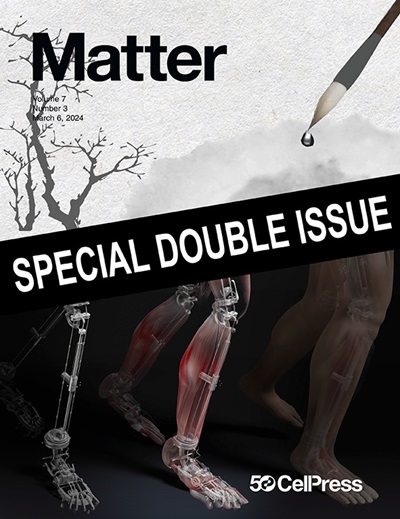Super-wetting interface engineering of space-confined micron-sized alloying anodes for high-performance sodium-based dual-ion batteries
IF 17.3
1区 材料科学
Q1 MATERIALS SCIENCE, MULTIDISCIPLINARY
引用次数: 0
Abstract
Poor electrolyte wettability on micron-sized alloying anodes causes uneven interfacial reactions and stress distribution. To address this issue, we present a super-wetting interface engineering strategy to foster reaction homogeneity and accelerate reaction kinetics during alloying. As a proof of concept, micron-sized Sn particles are deposited into the space-confined three-dimensional aluminum current collector and encapsulated with amorphous carbon. By combining experimental and theoretical analyses, we confirm an electrolyte-philic interface with a near-zero contact angle, employing the Wenzel wetting model. Simultaneously, the high elastoplastic deformation of the aluminum cage ensures stable electrical contact during the cycling process. The optimized Sn anode paired with a graphite cathode exhibits excellent cycling stability and rate performance in sodium-based dual-ion batteries, maintaining a capacity of 90 mAh g−1 over 2,000 cycles at 5 C and retaining 52% capacity at 100 C. This investigation provides a feasible interfacial and structural engineering strategy for micron-sized alloying anodes in sodium-ion batteries.

高性能钠基双离子电池微米级合金阳极的超湿界面工程
微米级合金阳极上的电解质润湿性差,导致界面反应和应力分布不均匀。为了解决这一问题,我们提出了一种超润湿界面工程策略,以促进合金反应的均匀性和加速反应动力学。作为概念验证,微米尺寸的锡粒子被沉积到空间受限的三维铝集流器中,并被无定形碳包裹。通过实验和理论分析相结合,我们采用Wenzel润湿模型,确定了接近零接触角的亲电解质界面。同时,铝笼的高弹塑性变形保证了循环过程中稳定的电接触。优化后的锡阳极与石墨阴极在钠基双离子电池中表现出优异的循环稳定性和倍率性能,在5℃下循环2000次,保持90 mAh g - 1的容量,在100℃下保持52%的容量。该研究为微米级钠离子电池合金阳极的界面和结构工程策略提供了可行的方法。
本文章由计算机程序翻译,如有差异,请以英文原文为准。
求助全文
约1分钟内获得全文
求助全文
来源期刊

Matter
MATERIALS SCIENCE, MULTIDISCIPLINARY-
CiteScore
26.30
自引率
2.60%
发文量
367
期刊介绍:
Matter, a monthly journal affiliated with Cell, spans the broad field of materials science from nano to macro levels,covering fundamentals to applications. Embracing groundbreaking technologies,it includes full-length research articles,reviews, perspectives,previews, opinions, personnel stories, and general editorial content.
Matter aims to be the primary resource for researchers in academia and industry, inspiring the next generation of materials scientists.
 求助内容:
求助内容: 应助结果提醒方式:
应助结果提醒方式:


